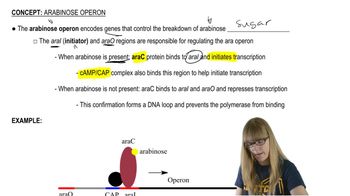How do we know that the trp operon is a repressible control system, in contrast to the lac operon, which is an inducible control system?

Contrast the role of the repressor in an inducible system and in a repressible system.
 Verified step by step guidance
Verified step by step guidance
Verified video answer for a similar problem:
Key Concepts
Inducible Operon System

Repressible Operon System

Role of the Repressor Protein

Write a brief essay that discusses why you think regulatory systems evolved in bacteria (i.e., what advantages do regulatory systems provide to these organisms?), and, in the context of regulation, discuss why genes related to common functions are found together in operons.
Contrast positive versus negative control of gene expression.
For the lac genotypes shown in the following table, predict whether the structural genes (Z) are constitutive, permanently repressed, or inducible in the presence of lactose. Genotype Constitutive Repressed Inducible I⁺O⁺Z⁺ x I⁻O⁺Z⁺ I⁻OᶜZ⁺ I⁻OᶜZ⁺/F'O⁺ I⁺OᶜZ⁺/F'O⁺ IˢO⁺Z⁺ IˢO⁺Z⁺/F'I⁺
For the genotypes and conditions (lactose present or absent) shown in the following table, predict whether functional enzymes, nonfunctional enzymes, or no enzymes are made.
<IMAGE>
The locations of numerous lacI⁻ and lacIˢ mutations have been determined within the DNA sequence of the lacI gene. Among these, lacI⁻ mutations were found to occur in the 5′-upstream region of the gene, while lacIˢ mutations were found to occur farther downstream in the gene. Are the locations of the two types of mutations within the gene consistent with what is known about the function of the repressor that is the product of the lacI gene?
